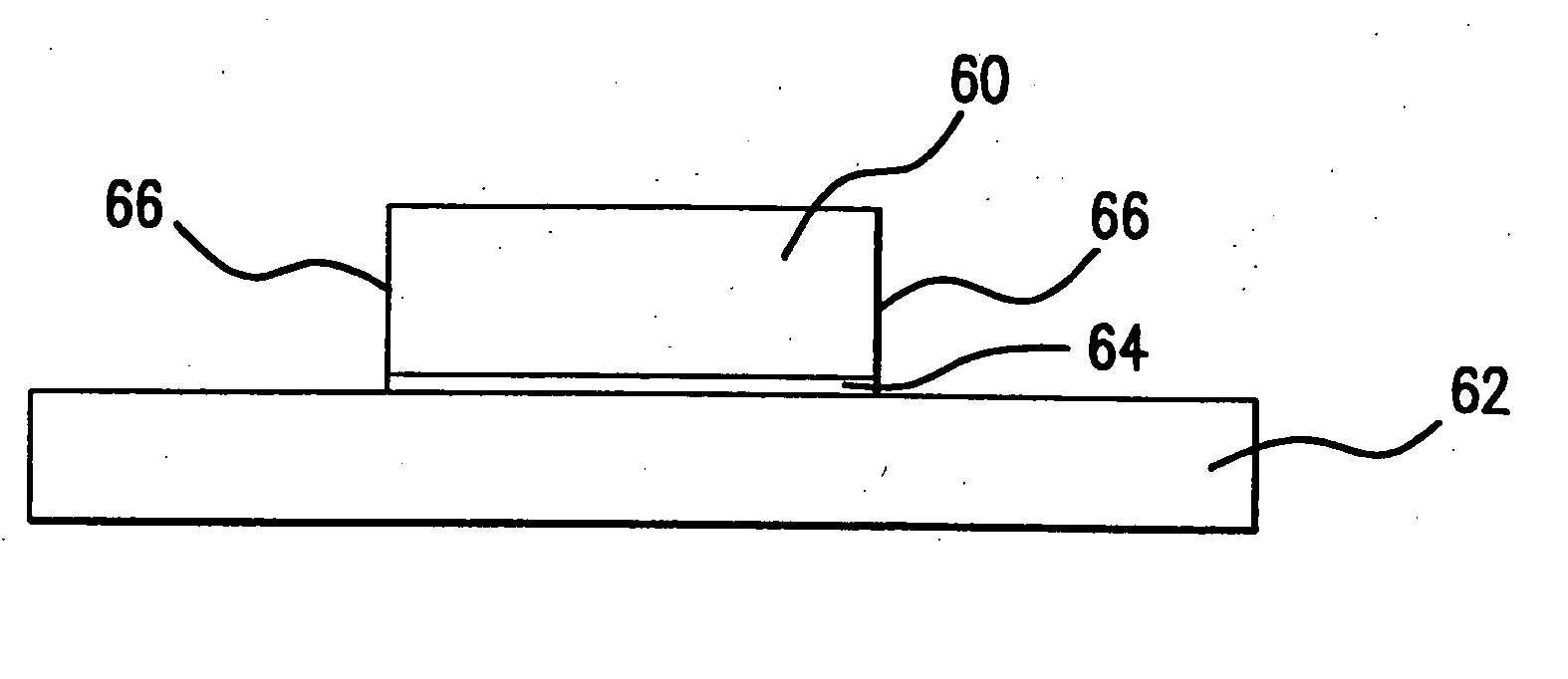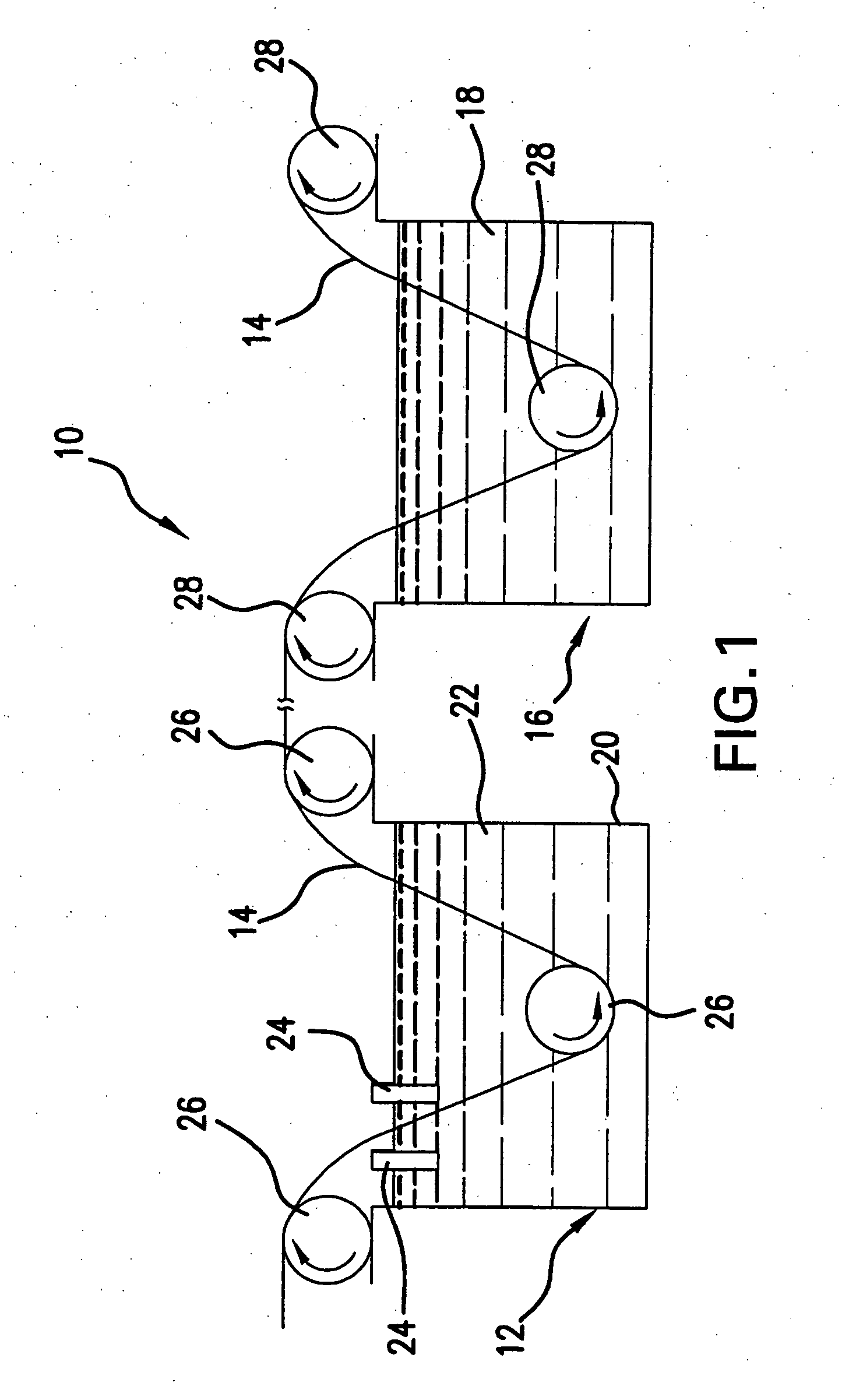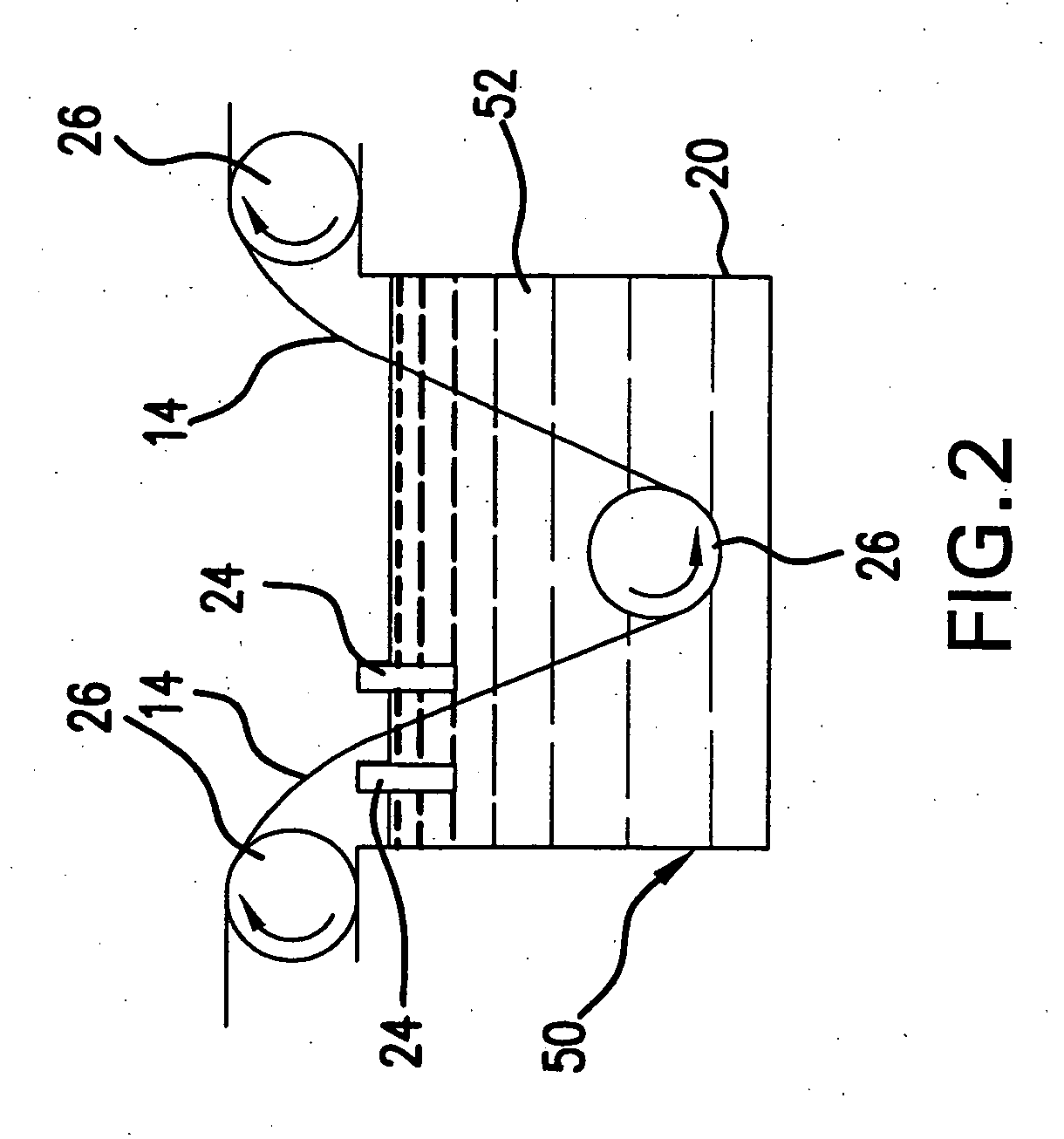Laser ablation resistant copper foil
a technology of copper foil and laser ablation, which is applied in the direction of improving the adhesion of metals to the insulation substrate, transportation and packaging, chemistry apparatus and processes, etc., can solve the problems of reducing the surface roughness, compromising the adhesion (peel strength) between the copper foil and the dielectric substrate, and limiting the degree of surface roughening
- Summary
- Abstract
- Description
- Claims
- Application Information
AI Technical Summary
Benefits of technology
Problems solved by technology
Method used
Image
Examples
example 1
[0056] Various comparative and exemplary samples were created using copper foil laminated to an FR4 (glass filled epoxy) dielectric substrate. The copper foil, dielectric substrate, and lamination method used in each of the samples were the same. Different treatment methods were used on the copper foils for each of the samples. Each of the samples was first peel strength tested in accordance with IPC-TM-650 Method 2.4.8.5 using a ⅛ inch wide test specimen. Next, all but one of the samples were exposed to an 18% HCl solution at 25° C. for up to 48 hours and then peel strength tested again in accordance with IPC-TM-650 Method 2.4.8.5 to test the effect of hydrochloric acid (HCl), as may used during the PCB manufacturing process for cleaning of the laminated and photodefined printed circuit board (PCB). The results of these tests are provided in Table 1, whichillustrates benefits of the present invention.
[0057] In general, IPC-TM-650 Method 2.4.8.5 describes a test to determine the pe...
example 2
[0074] Copper foils as described in Table 3 were subjected to a single CO2 pulse of about 300 μj / pulse. Foil A was a commercial product that was purchased from a vendor. Foil B was treated with P2 with an average surface roughness of 1.1 microns as known from the prior art. Foil C was treated with P2 but with the average surface roughness reduced to 0.5 micron. Foil D was treated with the chromate of the invention.
[0075] The surface morphology of control foil B is illustrated by a photomicrograph at magnifications of 1000× and 3000× in FIG. 6 and the surface morphology of inventive foil C is illustrated by a photomicrograph at magnifications of 1000× and 3000× in FIG. 7. The foils were also laminated to an FR-4 substrate and peel strength measured as described for Example 1.
TABLE 3Laser AblationSurfaceNoduleAreaPeel StrengthRoughnessHeightAblated(lb / inch)Foil(μm)(μm)(μm2)FR-4PolyimideACommercial1.52.013006.3BP21.12.521005.816.6CP20.60.5-0-4.917.2DChromate0.60.5-0-4.9
[0076] As can...
PUM
| Property | Measurement | Unit |
|---|---|---|
| surface roughness | aaaaa | aaaaa |
| surface roughness | aaaaa | aaaaa |
| surface roughness | aaaaa | aaaaa |
Abstract
Description
Claims
Application Information
 Login to View More
Login to View More - R&D
- Intellectual Property
- Life Sciences
- Materials
- Tech Scout
- Unparalleled Data Quality
- Higher Quality Content
- 60% Fewer Hallucinations
Browse by: Latest US Patents, China's latest patents, Technical Efficacy Thesaurus, Application Domain, Technology Topic, Popular Technical Reports.
© 2025 PatSnap. All rights reserved.Legal|Privacy policy|Modern Slavery Act Transparency Statement|Sitemap|About US| Contact US: help@patsnap.com



